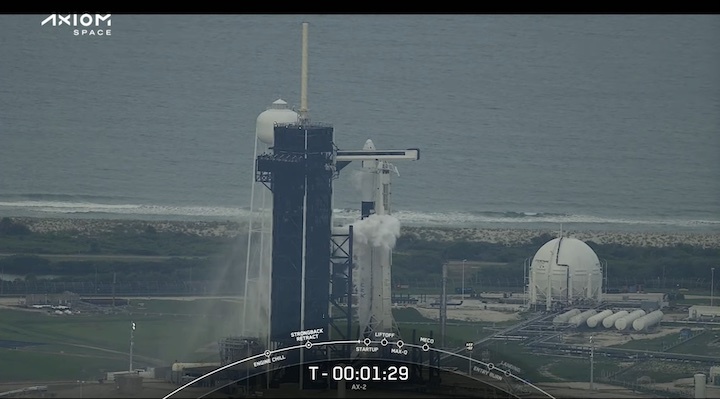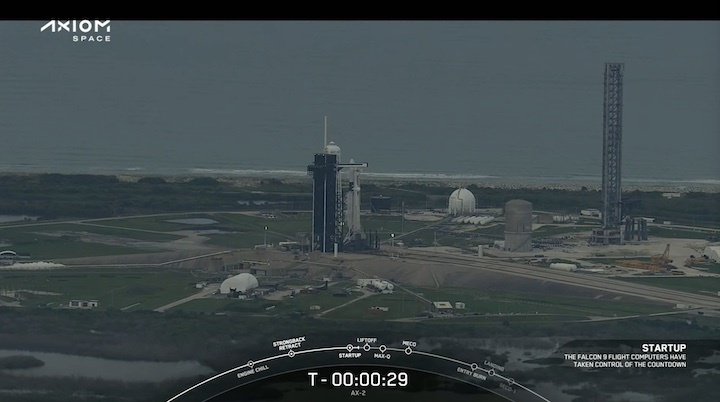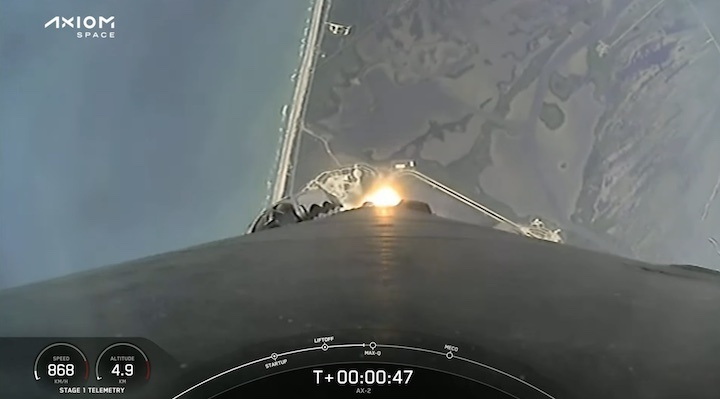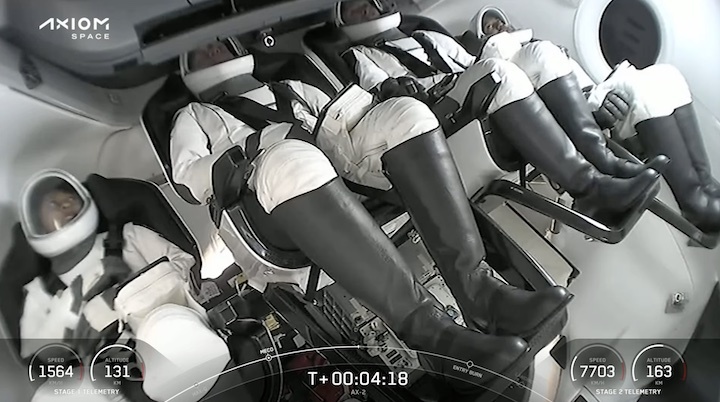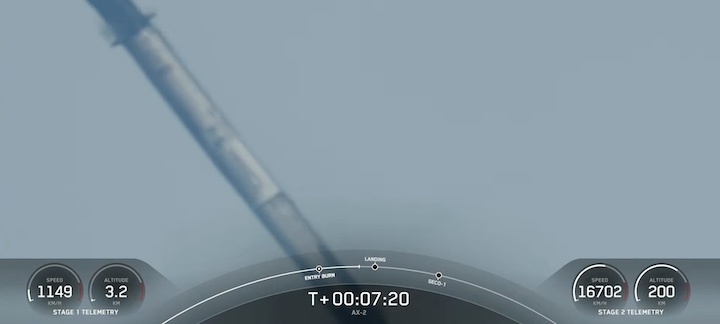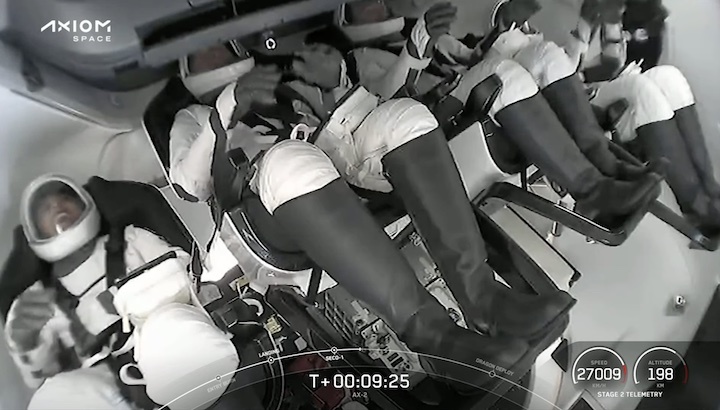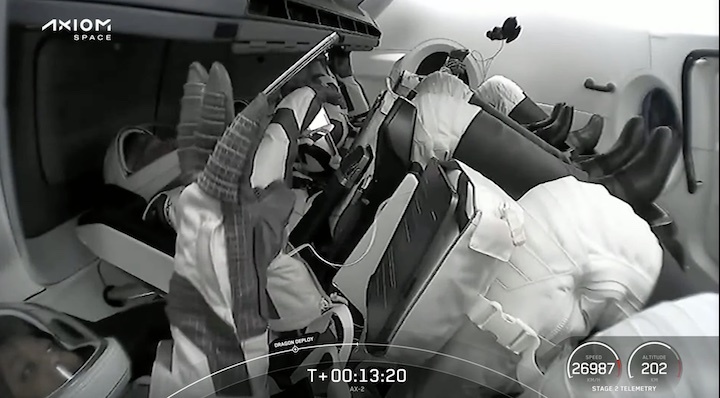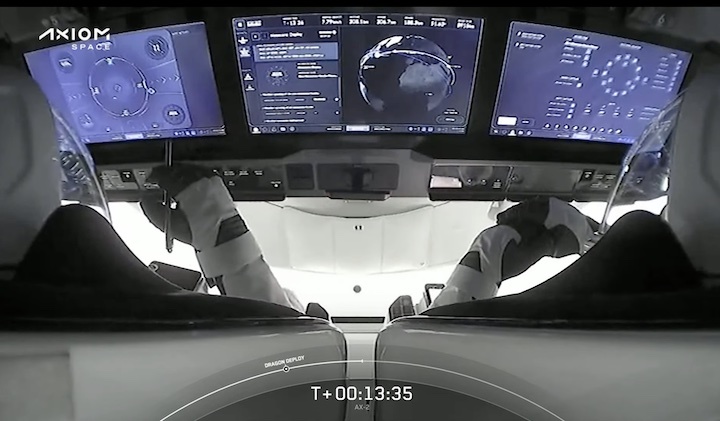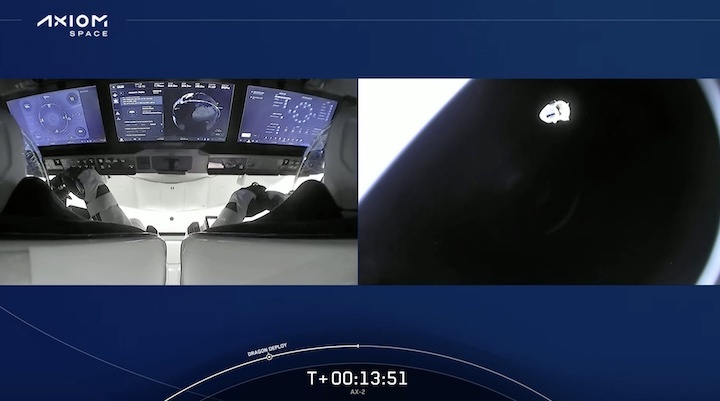9.04.2023
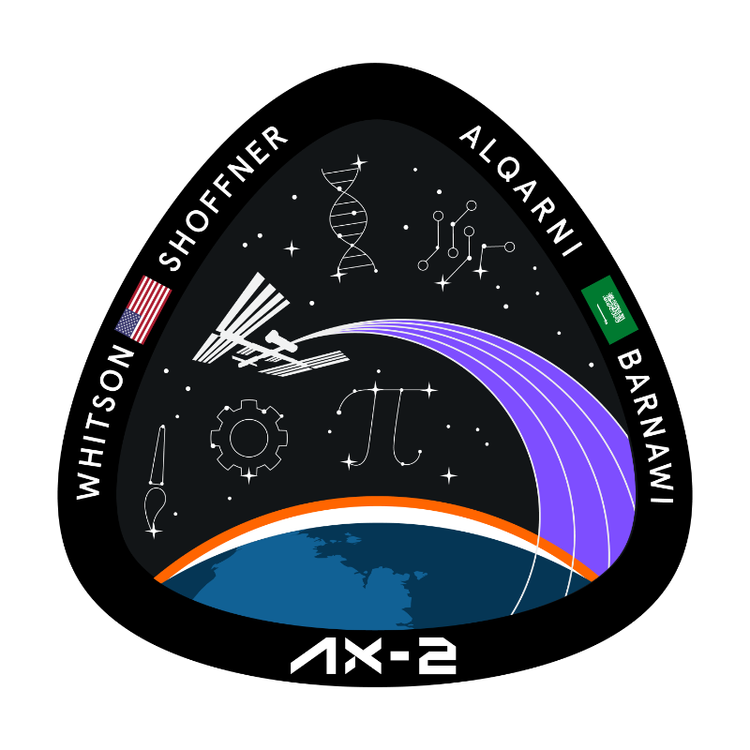
Two Saudi astronauts set to head to the International Space Station on May 9
Rayyanah Barnawi will become the first Arab woman in space

Saudi astronaut Rayyanah Barnawi. Photo: Axiom Space
Two Saudi astronauts are set to head to the International Space Station for a 10-day mission next month.
They will take off from the Kennedy Space Centre in Florida on May 9, 6.43am UAE time.
The target launch date was announced by SpaceX and Axiom Space, the company in Houston that has helped arranged this trip for Saudi Arabia, during a remote media briefing on Thursday.
Rayyanah Barnawi, who is set to become the first Arab woman in space, and Ali Al Qarni will blast off as part of the AX-2 mission, alongside former Nasa astronaut Peggy Whitson as commander and pilot John Shoffner.
“We are all excited and proud as Saudi astronauts to announce the launch date of our journey into space in May,” said Ms Barnawi.
“We look forward to completing the objectives of the kingdom's space programme, which will contribute to achieving future explorations in various fields.”
They will join UAE astronaut Sultan Al Neyadi, who began his six-month mission on March 3, on board the ISS.
'Significant milestone' for Saudi
Mishaal Ashemimry, the microgravity research lead at the Saudi Space Commission, said that this would be the inaugural flight under the kingdom's sustainable human space flight programme that was announced in September.
Saudi Arabia sent the first Arab to space in 1985 when Prince Sultan bin Salman took off on a space shuttle for a seven-day trip, but no long-term space programme followed.
“This is a significant milestone for us in the kingdom as we launch our first female and our second male to space,” she said.
“We're excited about this mission because it's an inaugural mission of our human space flight programme.
“The human space flight programme is intended to be sustainable, meaning that we have constant flow of astronauts going to do research to help all humanity with research.”
Once a Falcon 9 rocket delivers the Dragon crew capsule to space, it takes about 37 hours for the spacecraft to dock with the station.
The Saudi astronauts will join their colleagues in the orbiting laboratory, including the UAE's Dr Al Neyadi.
Twenty science experiments have been assigned to the AX-2 crew, and the Saudi astronauts will focus on 11 that have been given to them by universities in the kingdom.
Training for the mission
As launch day approaches, the crew will be training in a mock-up of the Dragon capsule to familiarise themselves with the spacecraft.
They have trained in Houston for the past year, as well as other parts of the US, Europe and Japan.
Commander Whitson said that they are “well prepared” for the mission.
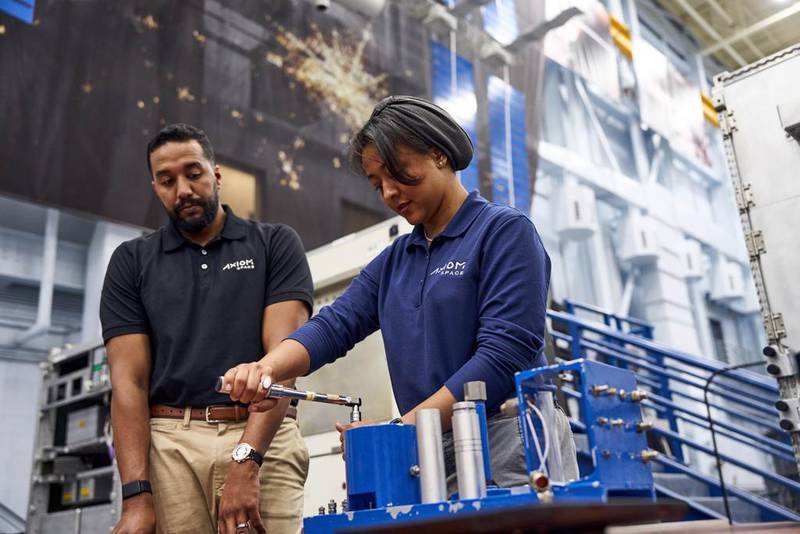
Rayyanah Barnawi and Ali Al Qarni learn about the systems of the ISS. Photo: Ali Al Qarni / Twitter
“We've done centrifuge training, zero-G flights, outdoor and confined environment training and team-building,” she said.
“John is going to be the pilot and he has decades of flight and amazing engineering experience.
“Ali, as a military pilot, brings a lot of operational and savvy discipline to the mission, and he's always volunteering for additional tasks. He's great to work with.
“Rayyanah will be the first Saudi woman to fly in space. So, obviously, she has an important role as a role model.
“But her scientific background in breast cancer and stem cell research is actually really important for a lot of the investigations that we're going to be conducting during the mission.”
Saudi Arabia looks to secure long-duration space missions
Ms Barnawi and Mr Al Qarni could be the first of a long list of astronauts that Saudi Arabia hopes to recruit.
Ms Ashemimry said that the kingdom is considering long-duration space missions next.
“We do have a desire and a goal to have long-stay missions that will capitalise on that microgravity environment,” she said.
“That's essentially what we would like to do with this human space flight programme.
“In doing so, we will train many astronauts, we will engage a lot of local entities to do a lot of research.
“We will also enhance our partnerships with international research entities on collaborative work for microgravity research that spans from human health all the way to physical science.”
More countries getting access to space
The trip to space for Saudi Arabia was made possible because of Axiom Space, the same company that helped the UAE secure its recent trip on the ISS.
Axiom Space has signed similar deals with Turkey, Italy and Hungary, ultimately helping more countries get access to space.
The space infrastructure company is also building a commercial space station in low-Earth orbit that would welcome tourists, astronauts and researchers.
Michael Suffredini, chief executive of Axiom Space, said that the company will be signing on two more countries.
“We think it's very important that we have the largest community of countries that explore beyond low-Earth orbit,” he said.
“And you start by co-operating together in low-Earth orbit. So, we think what we're doing is not only serving a market but more importantly helping us as a species learn to live off the planet which is going to be very important.”
Quelle: THE NATIONAL
----
Update: 19.04.2023
.
Mission Ax-2 Set to Launch Stem Cells to Space
Upcoming Missions Will be the First Time Induced Pluripotent Stem Cells Will be Produced in Microgravity by Astronauts

This is the first of a series of missions funded by NASA where, for the first time, induced pluripotent stem cells (iPSCs) will be manufactured in space by astronauts.
Astronauts on the International Space Station will grow and differentiate the stem cells to see whether microgravity has any impact on the way the cells develop into other cell types like brain and heart cells.
“A major challenge for using iPSCs for therapies in humans is making enough of them at very high quality,” said co-principal investigator Arun Sharma, PhD, a stem cell biologist in the Board of Governors Regenerative Medicine Institute and Smidt Heart Institute at Cedars-Sinai. “We want to be able to mass-produce them by the billions so that we can utilize them for a number of different applications, including discovering new drugs that may be able to improve heart function. And while we've gotten better at this over the last few years, there are still certain limitations when it comes to production of these stem cells, and we think microgravity may be able to overcome some of these.”

However, one of the main issues with producing iPSCs on Earth may involve gravity-induced tension, which makes it hard for cells to expand and grow. In a low-gravity environment, this stress may no longer present a barrier, potentially making it easier for stem cells to multiply faster.
“Gravity constantly pulls these pluripotent stem cells towards Earth, putting pressure on them and providing a stimulus to start turning into other cell types, but in microgravity that effect will no longer be there,” said Clive Svendsen, PhD, executive director of the Cedars-Sinai Board of Governors Regenerative Medicine Institute and co-principal investigator on the mission. “When the stress of gravity is not there pulling on the cells, we want to test whether they grow faster, have fewer genetic changes and remain in the pluripotent state. Then, when we turn them into the critical cells we need for healthcare, we will see if they do it better in microgravity. That is the goal of this new mission, and we are all very excited to see what happens up there.”
The upcoming missions also combine the stem cell expertise of Dhruv Sareen, PhD, and his team, who are already manufacturing clinical-grade stem cells at the Cedars-Sinai Biomanufacturing Center and are collaborators on the NASA grant.
Mission Details

The Cedars-Sinai team, which also includes postdoctoral fellow Maedeh Mozneb, PhD, and research associate Madelyn Arzt, will be on site for a week at the Kennedy Space Center to prepare the stem cells and load them onto the Dragon spacecraft. The first mission will be approximately one week in duration and is in preparation for longer missions in the months to come. Stem cells will be examined for how well they divide and take up DNA during spaceflight.
"It is exciting to see the wide range of important research that will be conducted on this mission and to be taking the first steps in developing future in-space manufacturing applications for some of our biomedical products," said Christian Maender, executive vice president of in-space solutions at Axiom Space. "We are pleased to have the opportunity with our private astronaut missions to advance this important work as we build a future commercial space economy.”
Follow Cedars-Sinai on Twitter at @CedarsSinaiMed and scientists @ArunSharmaPhD and @CliveSvendsen to get live updates of the mission.
Quelle: Cedars-Sinai
----
Update: 7.05.2023
.
SpaceX launch of Ax-2 private astronaut mission now targeted for May 21
Quelle: NASA
----
Update: 16.05.2023
.
Saudi astronauts to blast off on May 21, first Arab woman at International Space Station
Saudi astronauts Rayyanah Barnawi and Ali Al Qarni set date for ISS mission

Two Saudi astronauts will blast off for space mission on May 21, 2023
Saudi astronauts Rayyanah Barnawi and Ali Al Qarni will take off for the International Space Station on May 21.
The mission is part of the Kingdom’s astronaut program, which was launched on September 22 last year.
Saudi astronauts launch date
The mission represents Saudi Arabia’s ambitions in space research and is part of the goals of Vision 2030.
The Saudi space mission will launch from the United States and more importantly, marks a historical moment for the Kingdom.
The astronauts will conduct 14 pioneering scientific experiments in microgravity that will help scientists and researchers devise new ways to provide suitable conditions for humans to further explore space.
The results will advance the Kingdom’s global position in space exploration, with the ultimate aim of better serving humanity.
It will support Saudi research centres and will have a scientific impact on future space exploration.
The astronauts will also conduct three educational awareness experiments with 12,000 Saudi students via live feed.
This mission, once accomplished, places the Kingdom as one of the few countries that will have had two astronauts simultaneously on board the International Space Station.
Its success will enhance the Kingdom’s global position within the field of space exploration and service to humanity.
It will represent a milestone for the Kingdom’s astronaut program. The program is designed to prepare future astronauts and engineers for space through quality educational and training programs, participation in scientific experiments, international research and future space-related missions, achieving the goals of Vision 2030.
Quelle: Arabian Business
----
Update: 17.05.2023
.
NASA’s Artemis II Moon Crew Available for Interviews in Washington
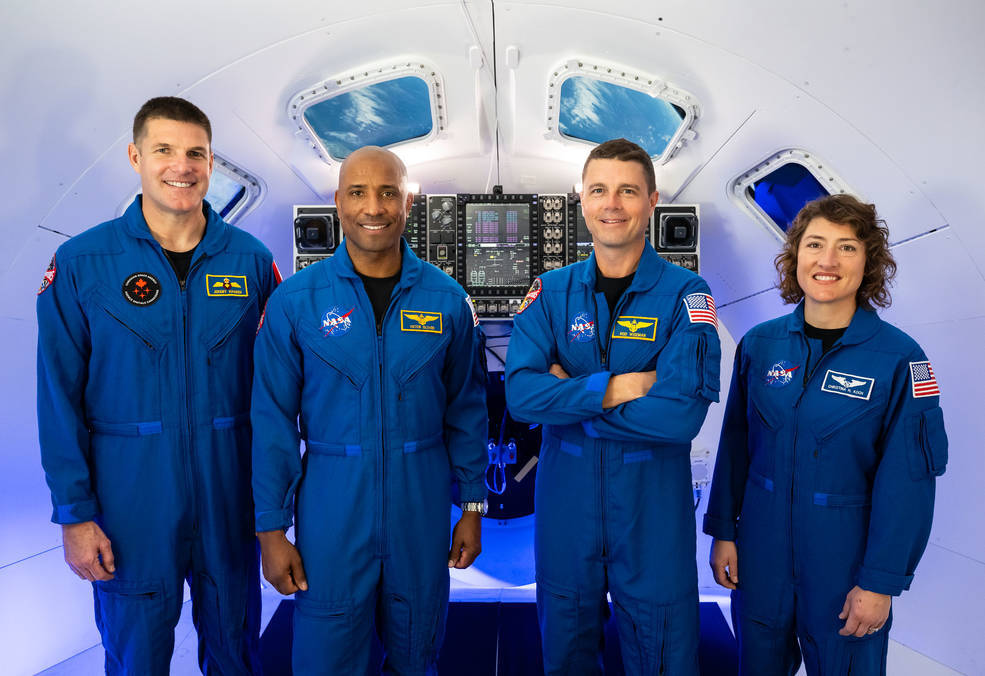
The four astronauts who will fly around the Moon on NASA’s Artemis II will visit Washington Wednesday, May 17, through Friday, May 19, to discuss their upcoming mission and are available for a limited number of in-person media opportunities.
The crew will visit the area to speak with members of Congress, meet with leaders at the Canadian Embassy, visit the Smithsonian's National Air and Space Museum, and attend several private events.
NASA astronauts Reid Wiseman, Victor Glover, and Christina Hammock Koch, and CSA (Canadian Space Agency) astronaut Jeremy Hansen will be available to answer questions from media during the following activities (all times EDT):
Wednesday, May 17
- 6 p.m.: Media availability at the Canadian Embassy at 501 Pennsylvania Ave., NW
- For consideration, members of the media interested in attending the opportunity at the Canadian Embassy must RSVP by 12 p.m., May 16, to: WSHDCmedia@international.gc.ca
Thursday, May 18
- 2:30 p.m.: Media availability on Capitol Hill with NASA Administrator Bill Nelson and Sen. Mark Kelly of Arizona, a former NASA astronaut, and CSA President Lisa Campbell
- Media interested in attending this question-and-answer session must apply by 5 p.m., May 17, to: press@kelly.senate.gov
Artemis II is the first crewed mission on NASA’s path to establishing a long-term lunar presence for science and exploration under Artemis and is the first mission with astronauts to the Moon in more than 50 years. The approximately 10-day Artemis II flight test will launch on the agency’s powerful Space Launch System rocket, prove the Orion spacecraft’s life-support systems, and validate the capabilities and techniques needed for humans to live and work in deep space.
Through Artemis missions, NASA will use innovative technologies to explore more of the lunar surface than ever before and collaborate with commercial and international partners. Then, we will use what we learn on and around the Moon to take the next giant leap: sending the first astronauts to Mars.
Quelle: NASA
----
Update: 21.05.2023 / 21:45 MESZ
-


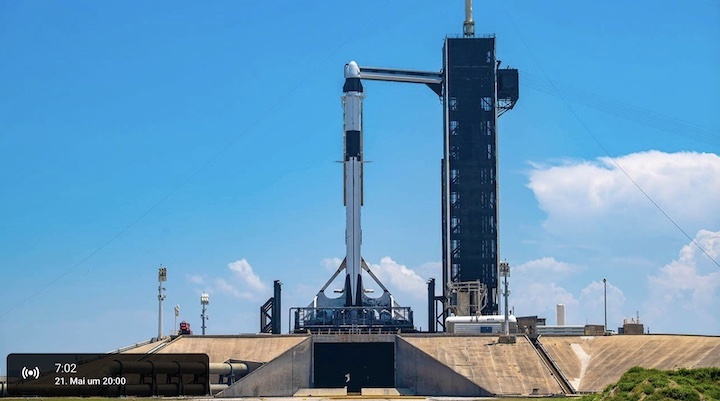







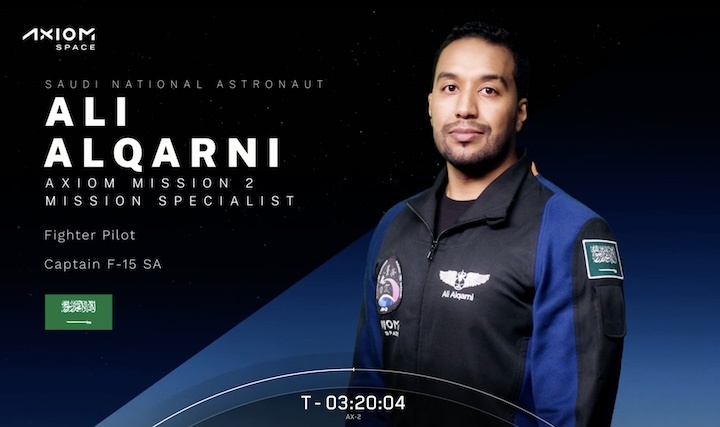
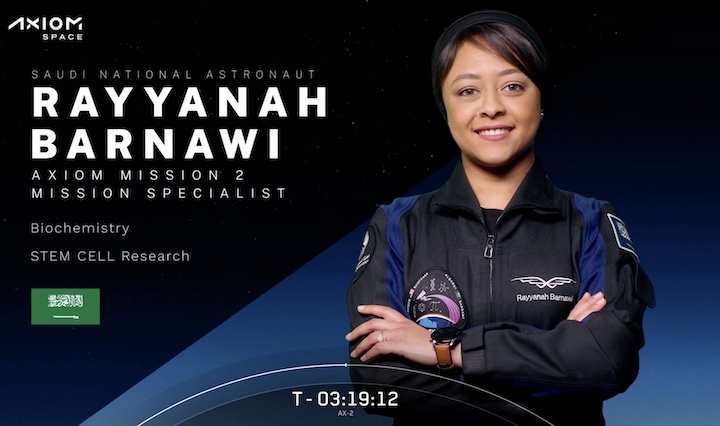







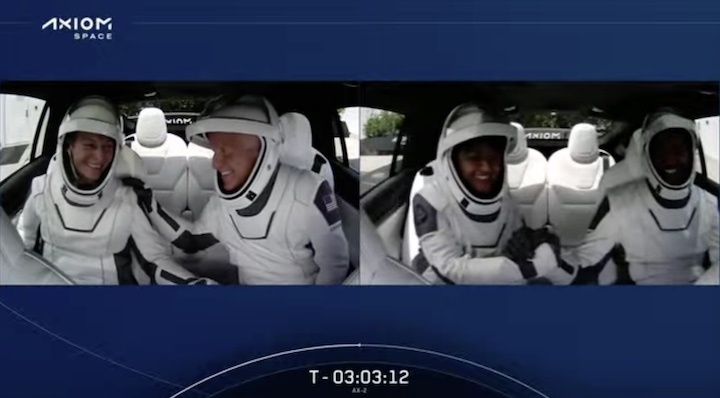
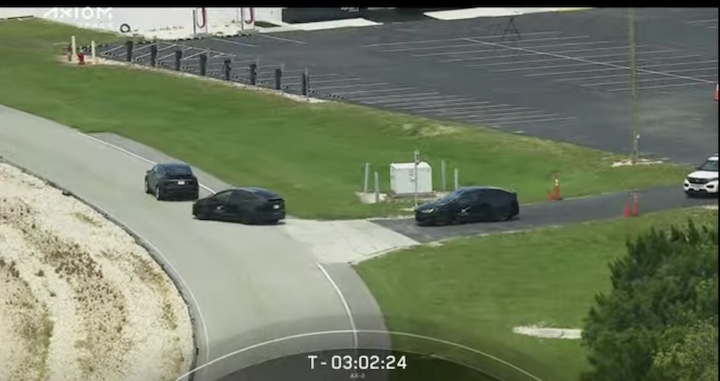



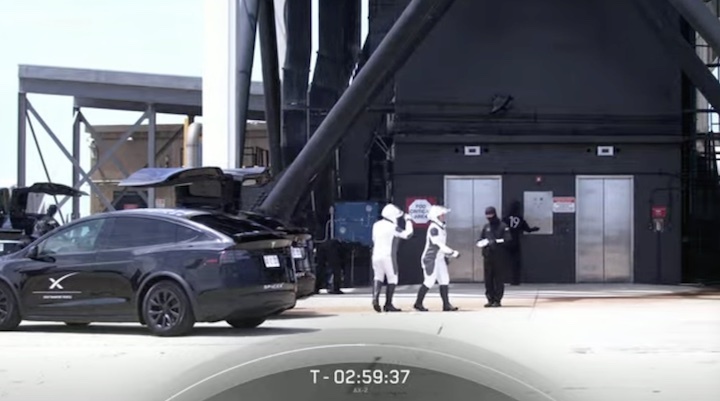

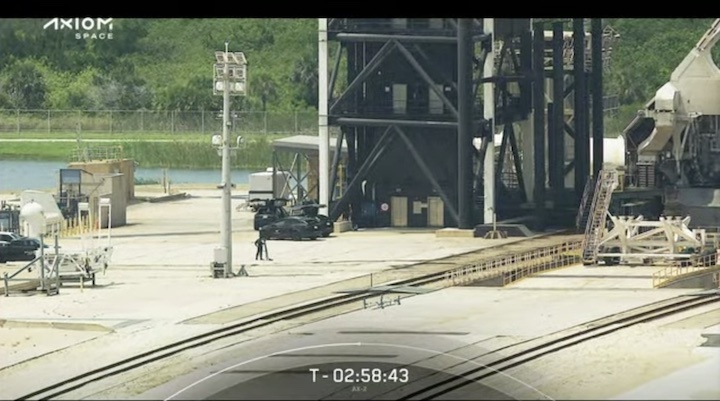


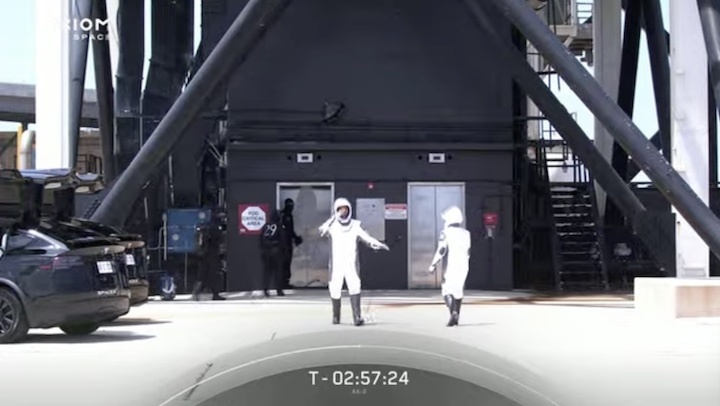


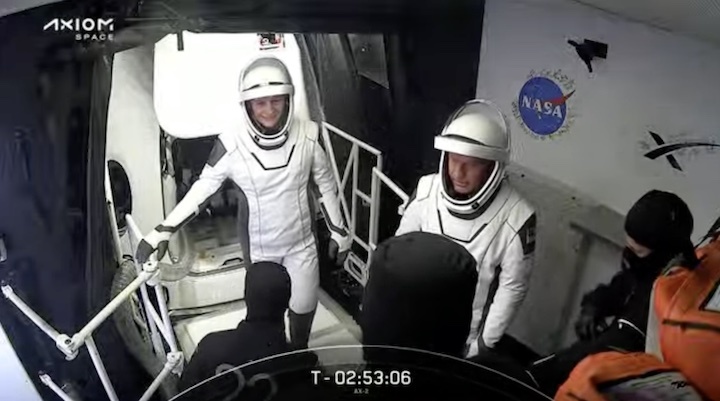







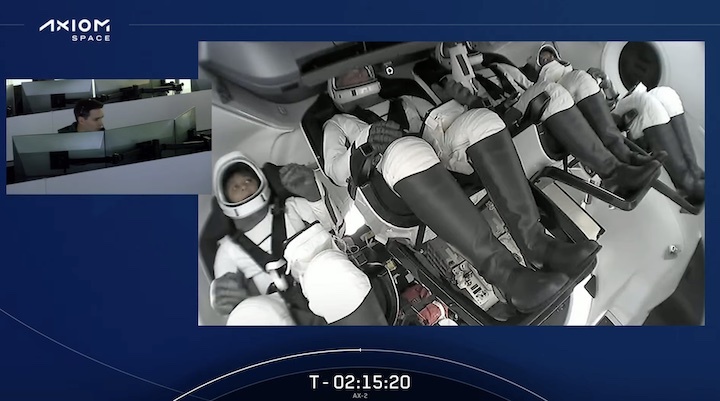
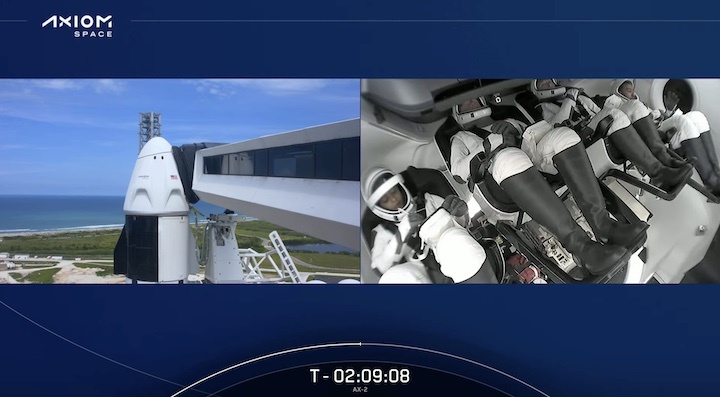
+++

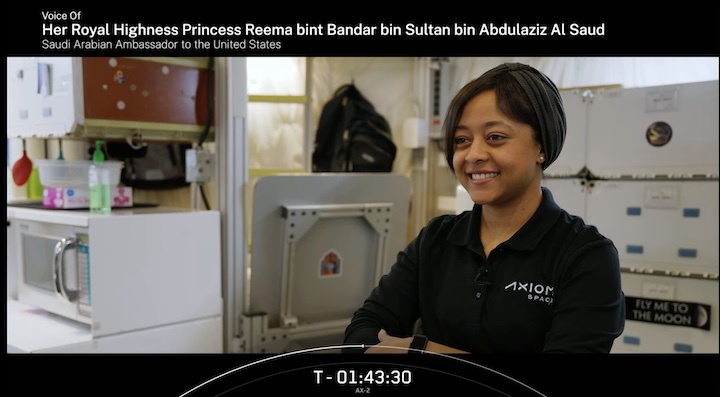

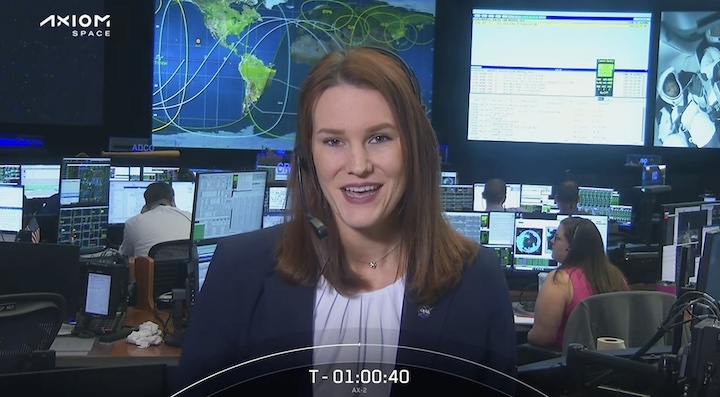

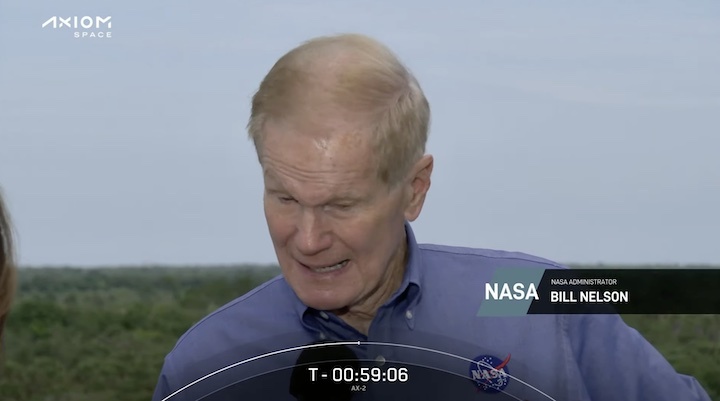
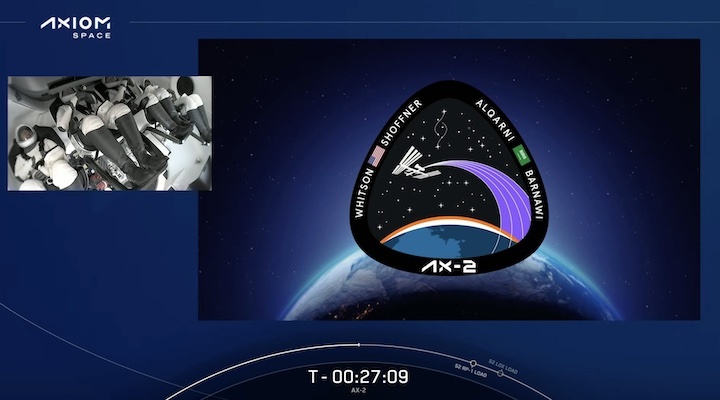




+++

